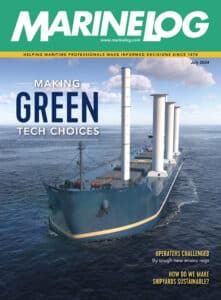
July 2024
How are vessel operators and designers meeting decarbonization standards, implementing green tech, and overcoming the challenges to achieve sustainability?

How are vessel operators and designers meeting decarbonization standards, implementing green tech, and overcoming the challenges to achieve sustainability?
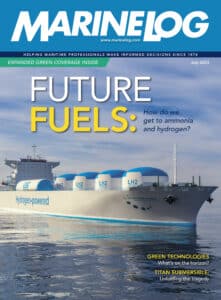
How is the maritime industry meeting decarbonization standards, implementing green tech, and overcoming the challenges to achieve sustainability?
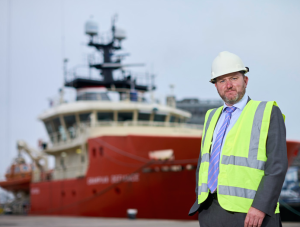
North Star, the U.K.’s largest ship operator servicing the oil and gas industry, has kick started its ambitious fleet decarbonization plans with an in-depth sustainability study across its 44 offshore infrastructure support vessels. The
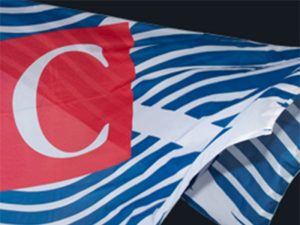
Summarizing the latest trends in green technology uptake and fleet renewal from the Clarksons’ Fueling Transition report and monthly data series, Steve Gordon, Clarksons Research managing director, comments that the uptake of
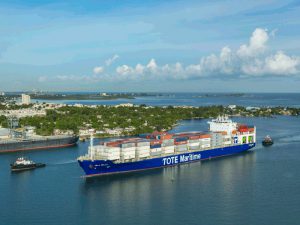
Leading shipowners and operators, gas suppliers, ports, class societies, and technologists gathered last month in London to announce a new cross-industry initiative aimed at accelerating the adoption of Liquefied Natural Gas (LNG) as a marine fuel. The initiative hopes to address the issues of LNG bunkering infrastructure, regulatory concerns, and the higher initial capital investment costs in building LNG-fueled vessels.
Called SEA/LNG, the initiative brings together participants from Carnival Corporation & plc, DNV GL, ENGIE, ENN, GE, GTT, Lloyd’s Register, Mitsubishi Corporation, NYK Line, Port of Rotterdam, Qatargas, Shell, TOTE Inc. and Wärtsilä.
The goal of the initiative explains TOTE Inc. Executive Vice President Peter Keller, who is serving as SEA\LNG’s Chairman, is to address “market barriers and help transform the use of LNG as a marine fuel into a global reality.”
When it comes to using LNG as a marine fuel, TOTE is all in. It’s committed about $500 million in capital investments to have its entire fleet to burn LNG. The U.S.-flag operator has built two 3,100 TEU LNG-fuelled containerships now in operation between the Port of Jacksonville, FL, and San Juan, PR, and is converting the two ORCA Class Roll-on/Roll-Off ships in its fleet to burn LNG. The first of those two is being converted at Singapore’s Keppel Shipyard this fall.
TOTE is not alone in adding dual-fuel and LNG-Ready tonnage to its oceangoing fleet in the U.S. Harvey Gulf International Marine, Crowley Maritime Corp., Matson Navigation, Kinder Morgan, and SEA VISTA/SEACOR all have vessels in operation or under construction that burn or could eventually burn LNG as a marine fuel. In all, there are 29 vessels that are designed or could be converted to burn LNG as shown in the accompanying table. This does not include inland and coastal vessels such as towboats or ferries.
The U.S. Maritime Administration, for example, is supporting the conversion of a towboat to burn LNG as fuel.
The use of LNG as a marine fuel has increased with Emission Control Areas (ECAs) coming into force in Northern Europe and North America under MARPOL Annex VI. LNG is relatively clean burning, containing virtually no sulfur content and it produces lower NOx and particulate matter in the combustion process than fuel oil and marine diesel oil.
A long-time, well-known proponent of LNG as a marine fuel, John Hatley, PE, Gas Initiatives Wärtsilä North America, sees gas as a compelling solution for box feeders, RO/RO vessels, ferries and cruise ships, product tankers, Great Lakes vessels, and ATBs on short coastal voyages that enter into ECAs.
LNG is therefore able to offer a fuel solution compliant with both current and anticipated future regulations.
The larger effect from Annex VI will come when the requirement to reduce sulfur content of marine fuels to 0.5% on a global basis effective 2020 or 2025 depending on the outcome of an IMO low sulfur fuel availability study to be completed in 2018. The issue for ship owners and operators is how to find alternatives to economically meet the low sulfur fuel mandate about to be imposed by MARPOL Annex VI.
However, while LNG is a competitive fuel relative to current alternatives, LNG infrastructure is needed in ports around the world to enable quick, safe and cost effective bunkering. In the U.S., the first LNG bunker transport barge with GTT Mark III Flex tank technology is under construction at Conrad Orange shipyard in Orange, TX, and expected to be delivered in early 2017. LNG bunkering infrastructure is far more advanced in Europe.
“Everybody is calling for alternatives to reduce environmental impacts says Philip Olivier, CEO of ENGIE Global LNG. “That’s why we have joined forces to actively promote LNG as a key fuel in maritime transport. LNG has the potential to take a 10% market share of global bunker demand by 2030. ENGIE will contribute to achieving this target.”
Tom Strang, Senior Vice President, Maritime Affairs, Carnival Corporation & plc, says, “By working together proactively across the whole marine LNG value chain we can make the transition to a lower emission marine sector a reality.”
Lauran Wetemans Shell’s general manager downstream LNG agrees. “To make the transition to LNG as a fuel happen it needs close collaboration with key players across the full value chain,” says, Wetemans. “SEA/LNG aims to promote the benefits and potential of LNG fuel, and create a level playing field for LNG with other fuels. It will complement the work being done by other organizations like the Society for Gas as a Marine Fuel.”
Leo Karistios, Gas Technology Lead, Lloyd’s Register, points out, “LNG fuelled shipping has mainly been for the visionaries and, until now, concentrated in specialist ship sectors: short sea shipping and ferries, mainly sailing between two fixed ports. We want to help drive the expansion of LNG as a marine fuel of choice, with not just more short sea and local ships burning gas, but also the deep sea trades.”
Timo Koponen, Vice President, Flow & Gas Solutions, Wärtsilä Marine Solutions, says his company will contribute “its vast experience and know-how in gas driven propulsion systems and the entire gas value chain” to the initiative. “By working together, we plan to overcome the challenges and speed the general acceptance of LNG. Having been a pioneer in the use of LNG as a marine fuel, and a developer of major technologies facilitating the adoption of LNG fuel, it is natural that Wärtsilä supports wholeheartedly the aims of the SEA/LNG coalition.”
Developing bulk carrier concept
Wärtsilä is also involved with an effort with class society ABS, Arista Shipping, Deltamarin, and GTT in the Project Forward joint development project (JDP) to develop a dry bulk carrier concept that employs LNG as fuel.
The goal is to develop a Kamsarmax bulk carrier design to be the first of this type suitable for worldwide services powered by LNG in compliance with the IMO’s Energy Efficiency Design Index 2025 standards, NOx Tier III and MARPOL Annex VI SOx emission levels. This landmark design will be the first LNG-fueled cargo ship capable of full-range operations.
“The long-term potential for LNG as a marine fuel is tremendous,” says ABS Vice President of Global Gas Solutions Patrick Janssens. “We see the near-term opportunities for larger vessels on fixed and known trade routes, but more opportunities will emerge as concepts mature and bunkering infrastructure expands. Environmental stewardship will continue to be a concern, and owners will be evaluating alternative fuel choices.”
“Project Forward represents a milestone for the shipping industry in bringing to the market a practical, achievable design for what are the workhorses of the shipping fleet,” says Arista Shipping Principal Alexander P. Panagopulos. “Our mission is to develop the next generation of energy efficient and environmentally friendly dry bulk cargo ships to be sustainable worldwide beyond 2030. It marks a number of ‘firsts’ and draws together the experience of a team of leaders in their field to make LNG powered shipping a reality on the high seas.”
Technical challenges in developing this design were considerable, as there is a need to carry a large volume of LNG (2,500 m3) – which corresponds to full-range operation and 40 days – in a type of ship where available space is limited and cargo space is at a premium.
ABS will provide Approval in Principle (AIP) for the concept, which is based on the highly optimized Deltamarin B.Delta 82 design, utilizing a GTT membrane LNG fuel tank. This design also could be applied to other bulk carrier sizes and serve as the basis for an LNG-fueled tanker. The concept features a Wärtsilä four-stroke, medium-speed engine without auxiliary generators, the first time this configuration has been applied to a vessel of this type, significantly simplifying the vessel’s engine room arrangement and contributing to lower capital expenditure.
Read more from our Green Technology & Sustainable Shipping section in our Digital Edition.
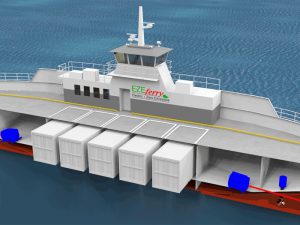
The first all-electric ferry built for operations in the United States may soon be coming to fruition in the Pacific Northwest. Bremerton, WA-based Art Anderson Associates with partner EESImarine has been developing concepts for the first all-electric battery-powered vehicle ferry to be produced and used in the United States. This zero emissions ferry will be the first of its kind putting the United States and more specifically, the Puget Sound region, on the map as a leader in green technology in the marine industry.
Art Anderson Associates is at the forefront of green technology within the marine community. Founded in 1957 as a naval architecture and marine engineering firm, the company has grown and diversified to employ architects, naval architects, planners, construction managers and civil, structural, mechanical and electrical engineers to create an interdisciplinary team. Art Anderson Associates has supported local and international ferry systems including Washington State Ferries and Alaska Marine Highway Systems for over 30 years.
New ferry for Guemes Island route
Art Anderson Associates and EESImarine are teaming up to generate funding for the potential implementation of the vehicle ferry concept for Skagit County’s Guemes Island-Anacortes passenger and car ferry replacement.
After an initial review of the Guemes Island Ferry route, Art Anderson Associates proposed to the Skagit County Board of Commissioners the all-electric ferry as a viable replacement for their aging ferry with additional benefits of reducing the lifecycle costs and environmental impacts that a traditional diesel ferry would have. The Skagit County Board of Commissioners signed a resolution on December 29, 2015 directing its Public Works Department to conduct an all-electric ferry propulsion and feasibility study with Art Anderson Associates.
The all-electric ferry being developed will be a practical alternative for operators of ferries throughout the world who want to accomplish zero emissions and achieve a reduction in overall costs of operations. It is projected that the all-electric ferry will reduce owner costs by up to $170,000 per year and will provide an overall breakeven cost after five years of operation when compared to a diesel engine driven vessel.
Two battery banks using low maintenance technology will provide the vessel’s propulsion and power. This clean energy storage uses vanadium flow batteries provided by UniEnergy Technologies (UET) of Mukilteo, WA. This revolutionary battery system combines chemicals in a reduction-oxidation reaction that yields electricity. UET’s batteries are economical, safe, environmentally responsible, and highly reliable. After the batteries have reached the end of their utility, UET handles the decommissioning process and recycles the batteries. This process supports the development of recyclable fuel and eliminates the waste conventional batteries leave at the end of their lifetime.
A key part of the design was building the battery and propulsion system in modular format to permit complete system construction and testing before shipment to the shipyard. “This effectively makes the main power & propulsion system plug-N-play and eliminates a major headache for many small and mid-size yards,” says Payne.
Payne, an expert in electric marine and hybrid propulsion systems, has been designing commercial marine electrical systems since 1993.
The electric ferry also demonstrates energy efficiency and energy conservation. With electric motors and the vanadium flow batteries, the propulsion system’s efficiency is approximately 73%, which is twice the efficiency of a traditional diesel-driven vessel. In addition, the electric ferry supports the conservation of energy by obtaining its power from the electric grid—which in Washington is largely supplied by renewable energy sources including solar, biomass, biodiesel, hydroelectric, and wind power.
The cost of energy for powering the ferry is 30-60% less than for the equivalent amount of diesel fuel required for a vessel of a similar size. This estimation can largely vary due to the fluctuation in oil prices but even on the low end offers significant savings both fiscally and environmentally. The electric ferry project also has the ability to further provide savings by supporting demand-side response and management by charging during the evening when the demand for electricity is low.
The vessel and power system design requires no exotic hull materials and can also be used to retrofit an existing vessel. New all-electric vessel construction costs are estimated at approximately 5% more than an engine-driven version.
“This design concept has the potential to be a true differentiator in the marine industry as an alternative form of vessel propulsion,” stated Eric Engelbrecht, Vice President at Art Anderson Associates. “With demonstrated performance and future advances in battery technology, this propulsion system can be scalable and ultimately contend with other means of propulsion for cost of construction and operation, and have zero environmental impact.”
Seeking Funds
Funding is being sought through a variety of public and private sources. Skagit County has committed funds to conduct a propulsion study on the current ferry route and Art Anderson Associates is developing technical content for further funding outreach.
Currently, Art Anderson Associates is pursuing funding from Washington State’s Clean Energy Fund II, a state funded research, development and demonstration grant for technological advances in clean energy that bolsters the state’s clean tech sector. Funding of the Clean Energy Fund II supports development, demonstration, and deployment of clean energy technologies that save energy and reduce energy costs, reduce harmful air emissions, or otherwise increase energy independence for the state.
If successful, this project would be the first all-electric, battery-powered vehicle ferry in North America. “We are extremely excited to be working with Art Anderson Associates to conduct a feasibility analysis for this innovative technology that can have so many positive impacts to the citizens of Skagit County, Washington state’s marine industry and the environment,” said Captain Rachel Rowe, Ferry Operations Division Manager for Skagit County.
Benefits of Going All-Electric
The vessel will have zero emissions, which eliminates approximately 650 tons of greenhouse gases annually. This does not include the reduced emissions from the elimination of the transportation and delivery of the 59,000 gallons of diesel utilized by the existing vessel each year.
An all-electric vehicle ferry means direct cost savings to taxpayers and zero-emissions benefits to all environments. This technology will accomplish local, federal and global initiatives to be a zero emission producer and lower our carbon footprint.
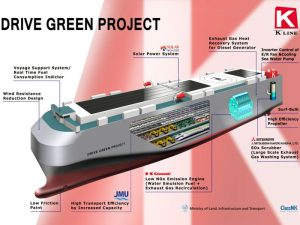
FEBRUARY 18, 2014—ClassNK will join with Kawasaki Kisen Kaisha, Ltd. (K-Line), Mitsubishi Heavy Industries (MHI), Mitsubishi Kakoki Kaisha, Ltd, (MKK), and Japan Marine United Corporation (JMU) in a new joint development project